Who’s Renting All Those New Apartments?
Millennials or aging baby boomers? Experts disagree on why the building boom.
It’s no secret that Milwaukee is in the midst of an apartment building boom. Northwestern Mutual has begun prep work for a 33-story apartment tower in downtown Milwaukee. The Mandel Group is about to open the doors on another phase of The North End on the Lower East Side. A 235-unit luxury building, part of The Corners of Brookfield lifestyle center, is nearing completion in Waukesha County.
What is a secret — or at least disputed — is who is driving this trend. Two schools of thought exist. One centers around a generation of Millennials delaying the traditional purchase of single-family homes and preferring more urban locations. The other theory posits that empty nester Baby Boomers are downsizing from single-family homes to urban apartments.
What’s driving this, according to Marcus & Millichap: “urban revitalization and downsizing empty nesters are fueling leasing in the rental market.” So improved downtowns, be it in Waukesha or Milwaukee, are being filled with a wave of retiring Baby Boomers? Anecdotally that makes some sense; the Mandel Group, for instance, is positioning their DoMUS apartments in the Historic Third Ward to sell to aging Baby Boomers.
But Fannie Mae director of strategic planning Patrick Simmons doesn’t buy this, arguing the trend is really about the Millennials. Simmons contends the theory that Baby Boomers are driving demand emerges from “confusion between changes in demand by generation (i.e., a group of persons born during the same period) and by age group.” Looking at available data between 2009 to 2014, Simmons states that “Boomers aren’t consuming many more apartments. Rather, for the most part, they’re simply aging in place, with those who previously occupied apartments in 2009 carrying that status with them into older age categories in 2014.” He finds there is some increase in the number of Baby Boomers living in apartments, but “the increase in Millennials’ consumption of apartments during this period was more than 10 times that of Boomers.”
Whatever the cause, demand is staying high in Milwaukee. As long as vacancy rates stay so low, expect more new apartment projects to be announced.
Rent Relief on the Way?
Despite the surge in new construction, don’t expect to see a decrease in apartment rental rates. According to Marcus & Millichap, the average effective rent climbed three percent in 2015 to $965 a month, the fastest rate of growth in a decade. Can it get worse for renters? Apparently so: Marcus & Millichap’s 2016 Milwaukee outlook predicts a 3.6 percent increase to $1,000 per month.
Surprisingly, rental costs fell Downtown last year: 2015 rates were at 2012 levels. Profiled as part of the “Downtown/Shorewood area,” the market report notes that rents fell 3.6 percent in 2015 to $1,228, “the only submarket to have reduced effective rent in 2015.” The report also notes that the Downtown/Shorewood area has a vacancy rate of 3.9 percent, the highest of any submarket.
How Much Higher Can Rental Costs Go?
One limiting factor to rental costs might be the cost to own a home in the Milwaukee market. According to Marcus & Millichap “the monthly cost of homeownership assuming a 20 percent downpayment and including insurance and tax expenses is $1,178 per month.” The report goes on to note that even though “single-family homes are typically affordable in the Milwaukee metro area,” many renters are choosing to live in urban neighborhoods, “where single-family housing prices are generally greater than the median home price. As urban living becomes more attractive, this trend will continue.” If rents surge too much higher, an increasing number of Millenials could find it cheaper to purchase a home. Yet, as the report notes, it’s already cheaper to own a home in the metro area than to rent an apartment Downtown, yet occupancy rates there remain high. A growing number of people clearly value the walkable amenities of urban living over the cost-savings of owning a suburban-style, single-family home.
Building Boom
Past Coverage
- Construction Costs Will Rise Slightly – March 1st, 2016
- Apartment Vacancies Hit 10-Year Low – January 29th, 2016
Eyes on Milwaukee
-
Church, Cupid Partner On Affordable Housing
 Dec 4th, 2023 by Jeramey Jannene
Dec 4th, 2023 by Jeramey Jannene
-
Downtown Building Sells For Nearly Twice Its Assessed Value
 Nov 12th, 2023 by Jeramey Jannene
Nov 12th, 2023 by Jeramey Jannene
-
Immigration Office Moving To 310W Building
 Oct 25th, 2023 by Jeramey Jannene
Oct 25th, 2023 by Jeramey Jannene


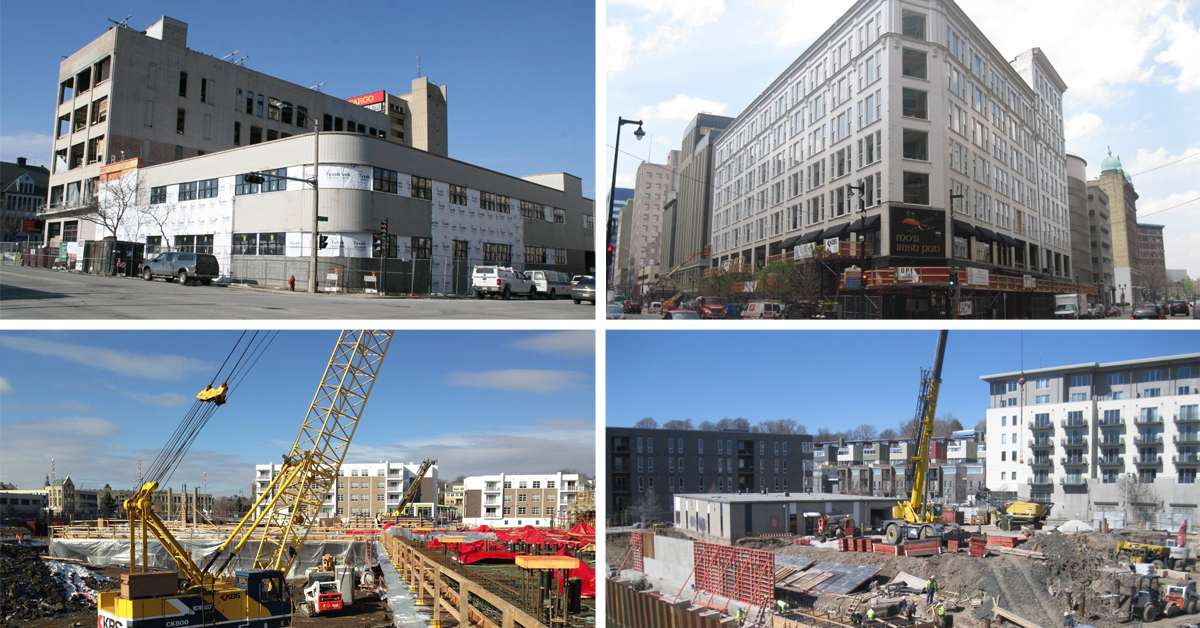
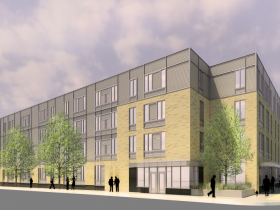
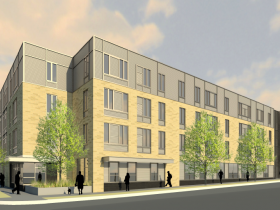
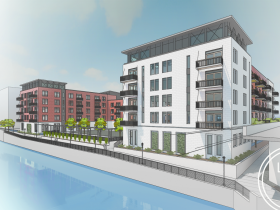
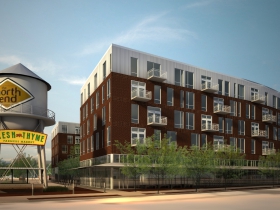
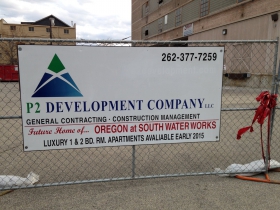
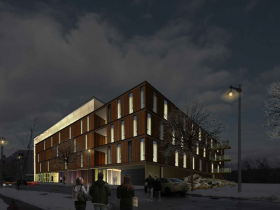




















The construction of these apartments is driven by developers and analysts speculating about future events. Maybe wait until all these new units are occupied before you call it a trend.
And why on earth would a Boomer downsize from home ownership to a luxury *rental*?
@Prickly It is already a multi-year trend. And I don’t know maybe, less hassle, better finishes, more amenities, ability to walk to just about anything… A lot of reasons.
Yes, this has been going on for a decade now. I’d say that qualifies as a trend. I wish some of these people would start buying single family homes instead so I can gain some equity in my house and refinance!
The numbers from Marcus & Millichap seem way off. An $1,179 monthly PITI with a down payment of 20% (which nobody does 5%-7% is normal) and a 5% interest rate would mean a purchase price of around $185,000 which is about 75% higher than the median home value in Milwaukee. I work as a housing counselor in Milwaukee and am constantly amazed at how little developers understand about the city, especially those that cater to high end clients. They live in a completely different world than the rest of us.
I’d like to know the income levels of the people moving into these new apartments. The “$965 a month” average figure is for what? A 1 bedroom? Or is that just total?
I know none of the new apartments built in the last few years have rent lower than that, for a studio or a 1 bedroom.
@Emmett – The numbers apply to the region, not just the city proper. I wasn’t able to find a reliable figure in a quick search for what the average sale price of a home in the past year in the Milwaukee market is.
@jeramey I guess if it includes the region the prices are about right. The 20% down still seems strange and out of date, though. That would require $37,000 on a $185,000 house. I can’t understand why they would assume that kind of down payment in their affordability calculations.
20% down means you can avoid mortgage insurance payments. We put 20% down on our house, although the price of our home was WAY lower than the average home sale price for the region. I think leading up to the 2008 bust no one put 20% down, but it may be getting more common now. However, I don’t have any data to back that up.
For me, it doesn’t make sense to buy, especially since I’d be looking at a condo. Property taxes are high enough to the point where taxes+HOA dues+interest will be greater than the rent I pay each month for my apartment. Since those expenses aren’t equity building, and condos seem to appreciate very slowly around here, buying doesn’t make much financial sense.
So I continue to rent.
Everyone can see that new condos and rentals are being built everywhere. If there is a shortage of new homes for buyers, and there is a glut of condos and rentals, why aren’t banks building new houses instead of condos and apartments?
@James, Bank’s do not build anything, they finance the construction. If Bielinski, Veridian, and others are building homes, they are likely receiving Bank financing in some form.
I don’t think anywhere in the article did they mention a glut of units currently, as they discuss vacancy rates being at historical lows. There are pretty solid single family building permit numbers in the Metro, but they are all out in the suburbs. I may be missing a small project, but the last built condominiums in downtown Milwaukee were either Moderne or The Breakwater with prices are out of reach of the average renter.
As someone who works in the industry, I am continually becoming surprised at the lofty rents the downtown units are commanding. Considering wage demographics, I am skeptical that there is an endless supply of people who can pay $2 per square foot for their habitation.